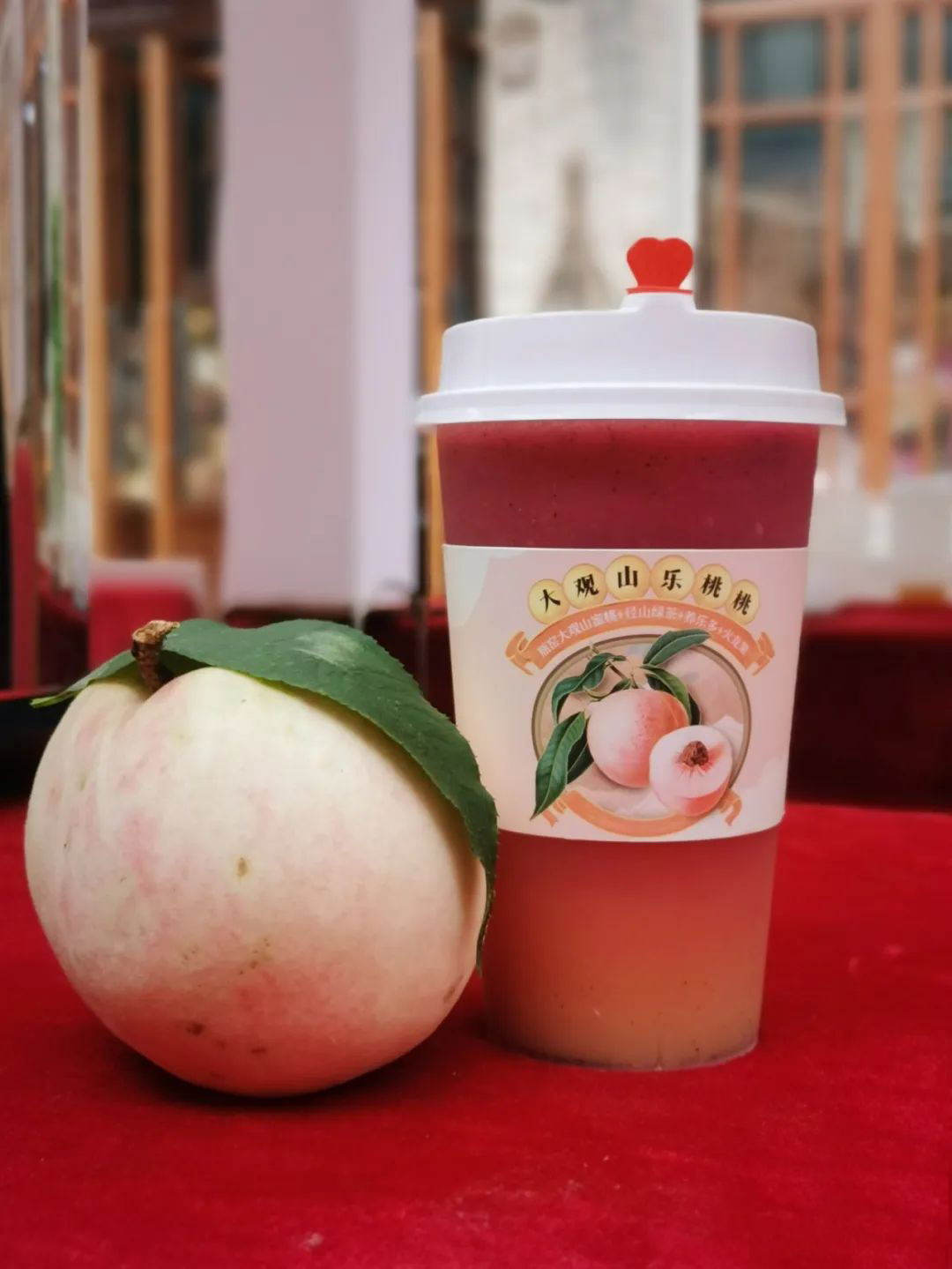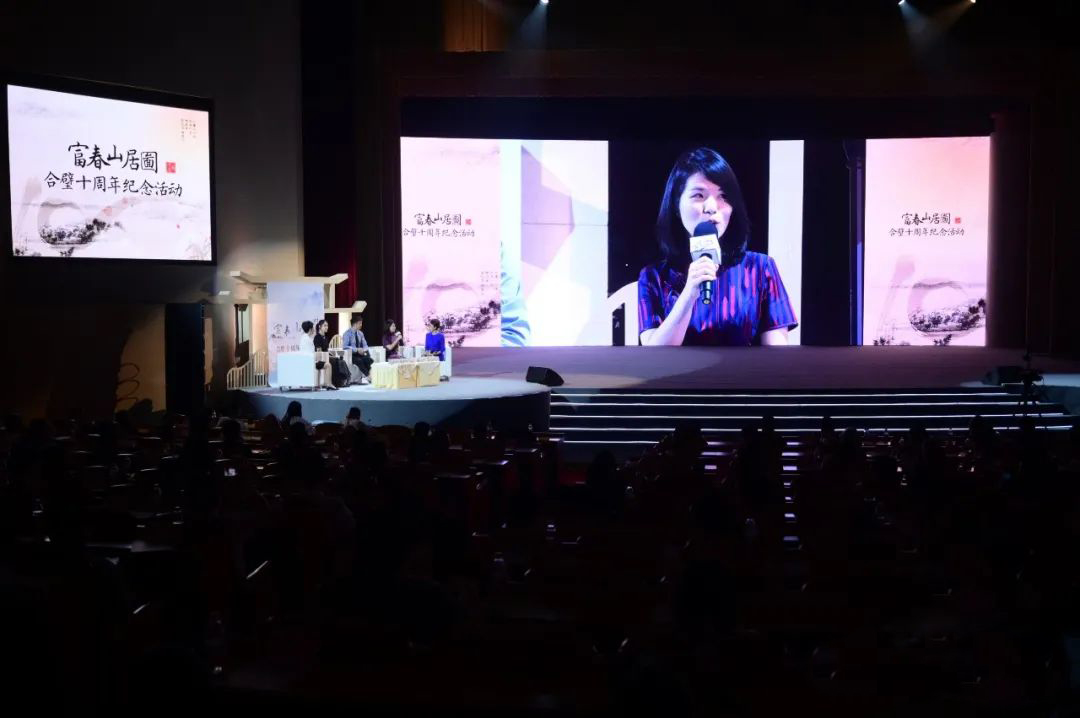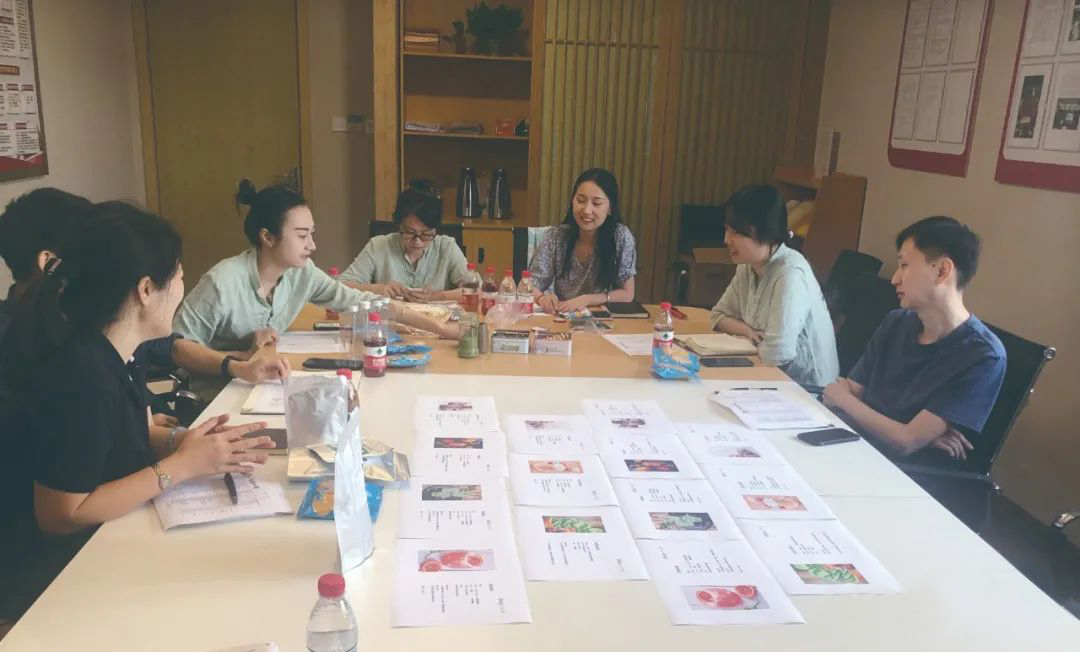I was born in Taiwan province of Hakka parents. My father’s hometown is Miaoli, and my mother grew up in Xinzhu. My mother used to tell me when I was a child that my grandfather’s ancestors came from Meixian county, Guangdong province.
When I was 11, our family moved to an island very close to Fuzhou because my parents worked there. At the time, I took part in many cultural activities organized by women’s federations of both the mainland and Taiwan. From that time on, I had a vague longing for the other side of the Straits.
Picture ● “Daguan Mountain Le Peach” developed in combination with Pingyao Town’s peach
Upon graduating from high school, I left my hometown and went to study in Japan. I met a guy from Hangzhou, who became my life partner. He graduated from Hangzhou Foreign Language School. Under his guidance and company, I was enrolled in Kyoto University. We went through postgraduate years together, worked there, got married, and bought a house in Japan. Suddenly one day, he told me that his grandmother had fallen down in his hometown and was hospitalized for emergency treatment. During the days when we asked the boss for leave, bought air tickets, and waited to return to China, time seemed to have stopped, and our mood had never been so bad. This incident triggered our plan to return to China and reunite with our relatives.
In 2018, we saw on the official notice that Yuhang district of Hangzhou released the first batch of recruitment plans to the top 100 universities in the world. With the encouragement of my husband and my family, I got a job from the Yuhang District Tourism Group. In February 2019, I became a “new Hangzhou resident” and also a “new Yuhang resident”. It is very fateful that my surname is Yu, Yu for Yuhang.
When I studied in Japan, the favorite course of foreign students was “tea ceremony”. It was precisely because of this course that I learned that the Japanese tea ceremony originated in Jingshan, Yuhang, and formed my first bond with the Chan (Zen) tea culture. After coming to Yuhang, I was assigned to Jingshan itself in western Yuhang, which has deep relations with Japanese tea culture, to engage in cultural excavation and integration of culture and tourism.
Picture●Invited to serve as a young guest of Taiwan compatriots who came to Hangzhou to work in the 10th anniversary commemorative event of “Fuchun Mountain Residence” in 2021
During the Tang (618-907) and Song (960-1279) dynasties, Chinese Buddhism was at its peak, and many Japanese monks came to China to study Buddhism. In the process, they came into contact with the tea banquet culture in temples, which was strictly disciplined and used to embody Taoism and Chan. After over a thousand years, what they brough back to Japan finally evolved into today’s Japanese tea ceremony. The tea culture of China and Japan is inextricably linked. Soon I plunged into the charming ocean of Jingshan’s thousand-year-old Chan tea culture, climbing the ancient paths surrounding the Jingshan Temple, and learned the art of tea at local tea companies. By reading Daguan Tea Theory, Pictured Tea Sets, among other tea ceremony treatises, I developed a “Course for Experiencing Jingshan Song Dynasty Tea Making” together with my friends.
Jingshan is the place where the tea sage Lu Yu (733-804) wrote his tea classics and thus the source of the Japanese tea ceremony. “Around 1240, the Japanese Chan monk Enji Benen came to the Jingshan Temple, the top Buddhist temple in southern China then, and learned Buddhism. After that, he brought tea seeds back to Japan and became the originator of Shizuoka tea. He was the founder of the Tofuku Temple in Japan, and was later honored as Shoichi Kokushi, the National Teacher of the Holy One.” Every time I teach in class, I show the pictures I found at the Tofuku Temple. And my audience is always pleasantly surprised.
Picture ● “Zhemo Niu” Matcha Milk Shaker Cup Combination
After the experience class, I would be praised by the excited tourists, “Ms. Yu, what you said is really good. It turns out that there are so many cultural and historical facts in it.” And I would feel deeply that it is meaningful and rewarding to let more people know the thousand-year-old Chan tea culture of Jingshan.
To create a unique image of Chan tea that belongs to Hangzhou and the world, we launched in 2019 a cultural tourism (IP) image of “Lu Yu and Tea Monks”, who are “Loyal to Chan and Expert at Tea Ceremony” in line with the public perception, which won the award as one of the 2019 Top Ten Cultural and Tourism Integration IPs for Hangzhou-Western Zhejiang Cultural Tourism, and since then, there have been more applications and practices in cultural and tourism integration.
At the beginning, we published tourist brochures, tourist maps in various promotional activities, but we realized that “the project will not last long without generating profits.” With the support and encouragement of the government, and after brainstorming with our partners, we decided to utilize Jingshan tea mixed with local ingredients as raw materials, by launching a new-style tea shop next to the hall of the Jingshan Tourist Center, focusing on milk tea. The shop “Lu Yu’s Tea” debuted on October 1, 2019.
We approached a local company, Jiuyu Organic of Zhejiang Tea Group, and started a strategic cooperation. All raw materials are selected from Jingshan Tea Garden, and for the milk ingredients we abandoned artificial creamer in favor of local New Hope pasteurized milk instead. After nearly a year of word of mouth, our milk tea shop was recommended as a “must-drink milk tea shop in Jingshan”.
We have innovatively stimulated diversified consumption of culture and tourism, and to promote employment of local youth, we have integrated culture and tourism to empower rural revitalization, promote the prosperity of western Yuhang and help the drive towards common prosperity. At the end of 2020, our brand was successfully selected into the first batch of cultural and tourism IPs in Zhejiang Province.
Picture ● Brainstorming meeting with friends for creative research and development of Jingshan tea
In addition to tea drinks, we have also devoted to the development of cross-industry cultural and creative products. For example, we successively launched the “Three-Taste Jingshan Tea” gift boxes of green tea, black tea and matcha, designed “Blessing Tea Bags” that incorporate the good expectations of tourists, and jointly produced Jingshan Fuzhu chopsticks with a local company. It is worth mentioning that the result of our joint efforts — the “Zhemoniu” matcha milk shaker cup combination was honored with a silver prize in the “Delicious Hangzhou with Accompanying Gifts” 2021 Hangzhou Souvenir Creative Design Competition.
In February 2021, a second “Lu Yu’s Tea” shop opened in Haichuang Park of Hangzhou Future Science and Technology City. One of the shop assistants, a girl from Jingshan born in the 1990s, said, “You can promote your hometown like this, and this kind of work is a rare opportunity.” In the shop, there are cultural tourism promotion maps and cartoons of Jingshan Mountain, and a cultural tourism promotion video Lu Yu Takes You on a Tour of Jingshan is being played. The small shop offers local farm products to more and more people who come to work and live in the Future Science and Technology City. To facilitate contact with the profound cultural heritage, a cooperation mechanism with the five western towns of Pingyao, Jingshan, Huanghu, Luniao, and Baizhang is in place as a vivid embodiment of the “1+5” district-level mountain-city cooperative linkage, mutual promotion and common development.
On June 1, 2021, I was invited to the 10th anniversary of the reunion of the two halves of the masterpiece painting Dwelling in Fuchun Mountains as a representative of young Taiwan compatriots who came to work in Hangzhou. The case of Jingshan Cultural Tourism IP and rural revitalization was shared there. On the podium of the Great Hall of the People of Zhejiang Province, I confidently and happily told the story of working hard with others to turn the “green leaves” of Jingshan into “golden leaves”. My buddies said later that I seemed to glow when I spoke. Yes, that is because I have considered this place as my hometown, where I have found the value of my contribution to society.
Last October, I joined the big family of the Yuhang District Culture, Radio, Television and Tourism Bureau. I dug deep into the cultural stories in the district and launched a brand new “New Visual Image of Yuhang Cultural Tourism”, applied to cultural products in a multi-dimensional way. We walked into every corner of western Yuhang to photograph the traditional delicacies carefully prepared by local farmers and restaurants, such as Baizhang special bamboo rice, Jingshan tea shrimps and Liniao pear crispy pork, and launched a series of short videos on “food + cultural tourism”. We further launched a Yuhang specialty food brand during the “Poetic and Picturesque Zhejiang, Thousand Bowls from Hundred Counties” campaign, to enhance the popularity of rural food culture and to empower rural revitalization with food by audio-visual means.
Coming to Yuhang is a new beginning for me to have a deeper understanding of Chinese culture, as well as a new starting point for me to integrate into the embrace of the motherland and promote cross-Straits exchanges. I hope that through my efforts, I will contribute more to the revitalization of rural areas through cultural and tourism integration and contribute to the high-quality development of the common prosperity demonstration zone in Zhejiang, so that the charm of Zhejiang and that of Yuhang will be known, felt and loved by more people around the world!
Post time: May-13-2022




